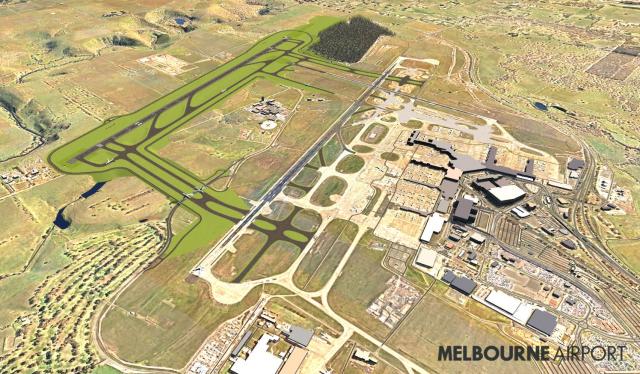A new runway, new internal road network, different access points, a new terminal and a new precinct are all part of the Melbourne Airport’s plans for the future.
The airport last week released its draft Master Plan and draft Major Development Plan which revealed the future direction of the airport.
The plans for the third runway, which will run north-south, is the big ticket item in the plan and has attracted the most attention.
The draft master plan details the airport’s plans for five years, 20 years and long term, which will result in a number of changes to the airport.
An expansion of the terminal four and the addition of a fifth terminal to the south and the provision of an inter-terminal mode of transport to enable the seamless integration and accessibility of the terminal precinct are part of the plans.
The road network within the airport is set to change.
“To address existing congestion issues during peak periods and accommodate future growth, Melbourne Airport is committed to undertaking a substantial investment in the on-airport road network in the first five years of this master plan period,” the documents said.
“This will be achieved through an expansion of the airport internal road network, as well as the T1,2,3 ground transport facilities.
“It has been planned as a combined, integrated suite of infrastructure collectively known as the elevated roads project.
“The new elevated road network will be used for all cars dropping-off, and for public pick-up – for all terminals. It will enable the removal of all traffic from Departure Drive, allowing the space to be better used for people walking and gathering around the terminal frontage.”
A new freeway exit from the Tullamarine Freeway to connect directly with the existing elevated roadway along Airport Drive has received planning approval.
A section of road zone, which will be called the Melbourne Airport Link [MAL], to the north of the terminals precinct is currently being planned for future connection to the Outer Metropolitan Ring Road.
The plans also highlight different ways people might access the airport with the construction of the Bulla Bypass and the Outer Metropolitan Ring transport corridor (OMR).
“For the airport, it will result in a considerable redistribution of traffic travelling to and from the airport,” the report said.
“Traffic travelling from the outer western and northern areas of Melbourne should travel via the OMR instead of the M80 Ring Road, thereby approaching the airport from the north (via MAL) instead of the south (via the Tullamarine Freeway).
“The proposed northern and western approaches provide an opportunity to link at the western sub-precinct, providing a new through-route for regional and sub-regional traffic from the adjacent areas.
“Such a through-route would allow a new direct road connection between Kings Road and the Oaklands Road-Somerton Road corridors.”
A Western Sub-Precinct is set to be constructed because the exact use of the land is yet to be determined, as it is unlikely it will be developed within the next five years.
It may be used for aviation-related services including aircraft maintenance and servicing or freight terminals, and/or non-aviation uses including industrial, commercial, retail, office and warehousing activities. “







